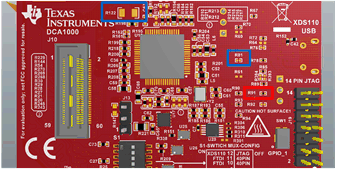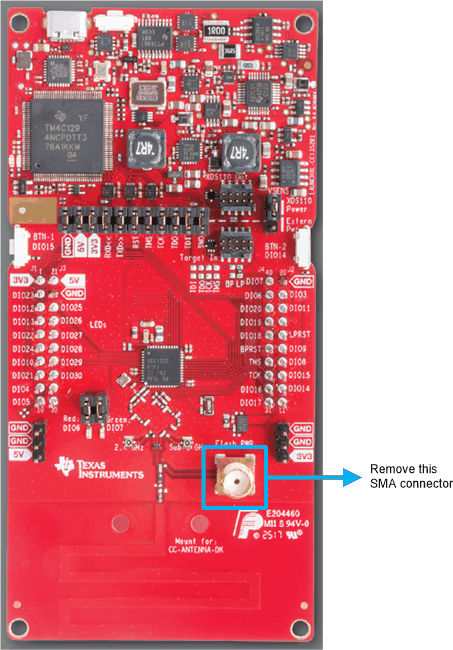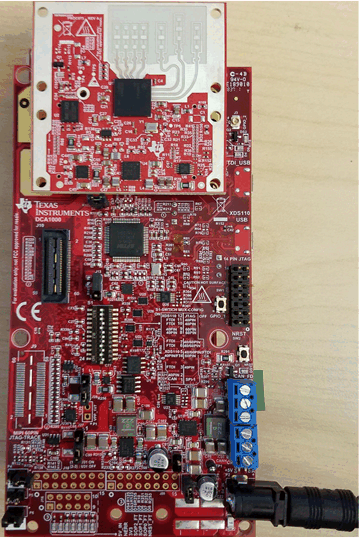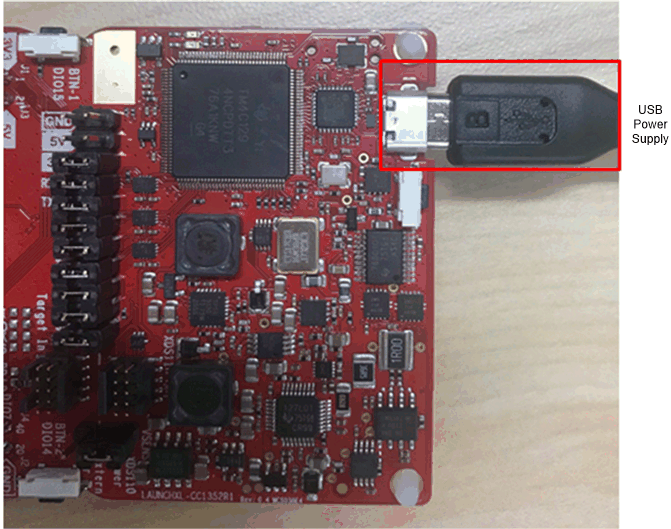TIDUED6B august 2018 – april 2023
- Description
- Resources
- Features
- Applications
- Design Images
- 1System Description
- 2System Overview
- 3Hardware, Software, Testing Requirements, and Test Results
- 4Design Files
- 5Software Files
- 6Related Documentation
- 7Trademarks
- 8About the Author
- 9Revision History
3.1.1 Hardware Setup
The TIDA-010022 design requires the following hardware:
- One mmWave sensor carrier card platform (MMWAVEICBOOST)
- One IWR6843 intelligent mmWave sensor standard antenna plug-in module (IWR6843ISK)
- Two CC1352 LaunchPads (LAUNCHXL-CC1352R1)
- One 5 V, 2.5 A or greater DC power supply
Before making any hardware modifications to the IWR6843 boards, flash them by following the steps in Section 3.1.2.
The CC1352 LaunchPad can attach to the MMWAVEICBOOST board after some hardware modifications. Table 3-1 lists the hardware modifications for the MMWAVEICBOOST board.
| MODIFICATION | REASON |
|---|---|
| Remove R91 | Disconnects RADAR_HOSTINTR1 pin from LaunchPad |
| Add R81 | Connects RADAR_MSS_LOGGER pin to LaunchPad |
| Add R122 and add jumper to J13 pin 2-3 | Connects 3.3 V rail on MMWAVEICBOOST board to 3.3 V rail on CC1352 LaunchPad |
| Configure mux as follows:
S1.1 OFF: SPI1 (Default) S1.1 OFF: SPI1 (Default) S1.2 ON : 40PIN S1.3 OFF: 40PIN/J16 S1.4 ON: FTDI/4PIN/J16 (Default) S1.5 OFF: 40/60PIN/FTDI S1.6 OFF: 40/60PIN (Default) S1.7 OFF: 40/60PIN S1.8 ON: 40PIN S1.9 OFF: 60PIN S1.10 ON: FTDI S1.11 ON: FTDI S1.12 ON: XDS110 (Default) | Enable 40-pin interface |
The components that need to be removed from the MMWAVEICBOOST board are marked by the red squares in Figure 3-1. The components that need to be added are marked in blue squares. No modifications are needed on the IWR6843ISK board.
 Figure 3-1 MMWAVEICBOOST Front PCB Layout View
Figure 3-1 MMWAVEICBOOST Front PCB Layout ViewSome modifications are needed on the CC1352 LaunchPad that will be used as the sensor node. Remove the following jumpers: "5V", "3V3", "RXD", and "TXD" and switch the XDS110 power jumper to "Extern" Power. Remove the SMA connector for the external antenna (J7 on the schematics) on the CC1352 LaunchPad for it to mate with the MMWAVEICBOOST board (see Figure 3-2).
No hardware modifications are needed on the CC1352 LaunchPad that will be used as the collector node.
 Figure 3-2 SMA Connector in CC1352 to be Removed (Sensor Board)
Figure 3-2 SMA Connector in CC1352 to be Removed (Sensor Board)After all hardware modifications are completed, the IWR6843ISK board, MMWAVEICBOOST board, and one of the CC1352 LaunchPads can be assembled together to form the sensor node.
The sensor node (IWR6843 boards + CC1352) can be powered by connecting the 5-V power supply to the MMWAVEICEBOOST board and the collector node can be powered by connecting the USB power supply.
 Figure 3-3 Sensor Node (IWR6843 Boards + CC1352) Power Supply
Figure 3-3 Sensor Node (IWR6843 Boards + CC1352) Power Supply Figure 3-4 Collector Node (CC1352 Only) Power Supply
Figure 3-4 Collector Node (CC1352 Only) Power Supply